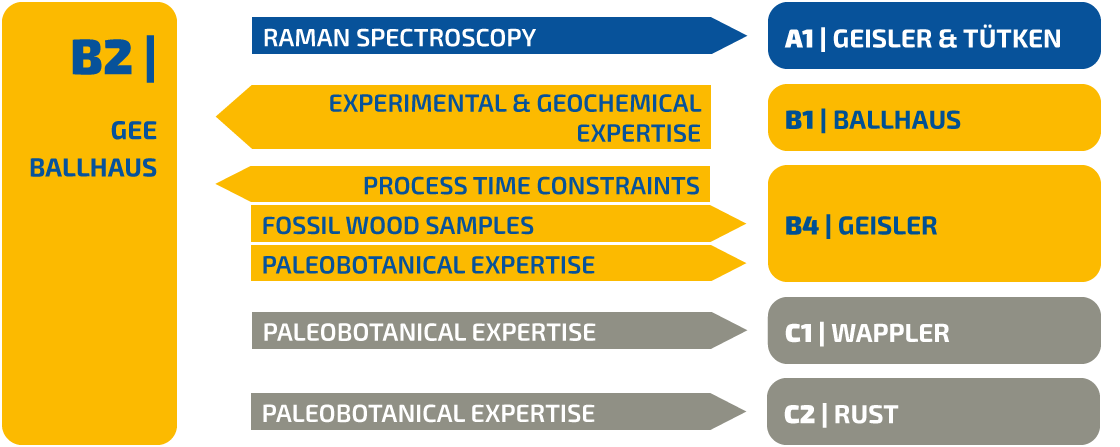DFG Research Unit FOR 2685 | B2
From cell to cell, tissue to tissue: Pathways in low-temperature wood silicification
Abstract
Silicification is the most important fossilization process for cellular preservation in plants, which can result in cells preserved in exquisite detail. Understanding this process has been of great interest for nearly a century, and it is now known that any substrate that is able to bring elevated silica into solution is capable of silicifying plant material. The silica-rich solution enters wood and initially preserves cells by templating a film on the cell walls. Currently, analytical techniques are routinely used to characterize the geochemistry involved in wood silicification. However, nearly all studies are concerned with wood silicification only after mineralization in the cells has already begun or been completed. Indeed, what is virtually unknown is the cellular and tissue pathway of aqueous silica into the tree before silica is precipitated in the wood cells.
Here we present a cohesive analytical and experimental research program of four studies aimed at elucidating the tissue and cellular pathway of aqueous silica into wood and other woody tissues such as seed cones. The first study will determine the pathway of silica-laden water in four upright conifer saplings rooted on a sinter apron of a hot spring in Yellowstone National Park, Wyoming, USA. The second study will ascertain whether drip structures seeping out of 17-million year old trees in the Lesvos Petified Forest represent the silica-rich tree sap in the trees when they were still alive, implying that the trees were involved in self-mineralization of their cells. The third study will trace the pathway of silica into allchthonous logs, fossil wood and cones from the sediment substrate.
The fourth study will consist of a series of laboratory experiments tracking the pathway of aqueous silica from cell to cell in wood tissues. Using water, powdered volcanic glass, and a heat source, incipient silicification will be produced in various conifer and angiosperm woods of various densities, with and without bark. Pivotal is the orientation of the wood tissue to the flow of aqueous silica. Experiments will also be carried out to induce silicification in branches with bark to show whether bark hinders the entry of silica.
Cutting-edge technologies will be applied to the imaging, mapping, and analyzing of the distribution of silica, other minerals, and residual lignin on the micrometer and nanoscale levels. These mostly involve non-invasive, non-destructive methods of surface analysis such as include wave-dispersive X-ray analysis (WDX), confocal Raman spectroscopy (CHRS), X-ray diffraction (XRD), helium ion microscopy (HIM), X-ray photoelectron spectroscopy (XPS), time-of-flight mass spectrometry (ToF-SIMS), and matrix assisted laser desorption/ionization time-of-flight mass spectrometry (MALDI-ToF). High-resolution research will also be carried out using scanning electron microscopy, backscattered backscattered electron microscopy, and transmission electron microscopy.







